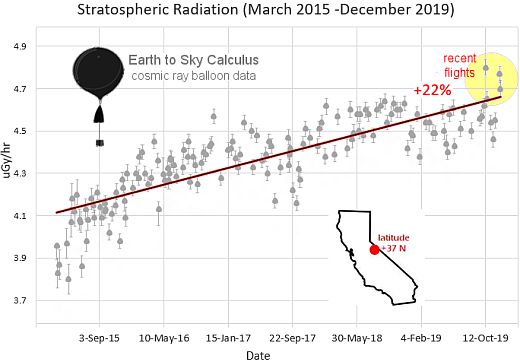From Spaceweather:
Last time we had so few sunspots was in 2008 - another solar minimum. What makes things really interesting is this from Paul Dorian writing at Watts Up With That:
Deep solar minimum on the verge of an historic milestone
The sun is currently in the midst of a deep solar minimum and it is about to reach an historic milestone. So far this year the sun has been blank (i.e., no visible sunspots) for 266 days and, barring any major surprises, it’ll reach 269 days early next week which will be the quietest year in terms of sunspots since 1913 when the sun was spotless for 311 days. In fact, the current stretch of consecutive spotless days has reached 29 and for the year the sun has been blank 77% of the time. The current record-holder in the satellite era for spotless days in a given year is 2008 when the sun was blank for 268 days making the 2008-2009 solar minimum the deepest since 1913.
Solar minimum is a normal part of the 11-year sunspot cycle, but the last one and the current one have been far deeper than most. One of the consequences of a solar minimum is a reduction of solar storms and another is the intensification of cosmic rays. The just ended solar cycle 24 turned out to be one of the weakest in more than a century – continuing a weakening trend that began in the 1980’s – and, if the latest forecasts are correct, the next solar cycle will be the weakest in more than 200 years.
And back to Spaceweather:
COSMIC RAY UPDATE: Something ironic is happening in Earth's atmosphere. Solar activity is low--very low. Yet atmospheric radiation is heading in the opposite direction. Cosmic rays percolating through the air around us are at a 5 year high.
Take a look at these data gathered by cosmic ray balloons launched by Spaceweather.com and the students of Earth to Sky Calculus almost weekly since March 2015:

Radiation levels have been increasing almost non-stop since the monitoring program began, with recent flights registering the highest levels of all.
What's happening? The answer is "Solar Minimum"--the low point of the 11-year solar cycle. During Solar Minimum (underway now) the sun's magnetic field weakens and allows energetic particles from deep space to penetrate the Solar System. As solar activity goes down, cosmic rays go up; yin-yang.
When cosmic rays hit the top of Earth's atmosphere, they produce a spray of secondary particles and photons that rain down on Earth's surface. This is what our balloons measure--the secondary spray. We use X-ray and gamma-ray detectors sensitive to energies in the range 10 keV to 20 MeV. This type of radiation, which you can also find in medical X-ray machines and airport security scanners, has increased more than 20% in the stratosphere.
But it is all the fossil fuel use that is causing this... Right?
Our sun is entering a period of low output and we are set to experience a cooling trend on Earth.

Leave a comment